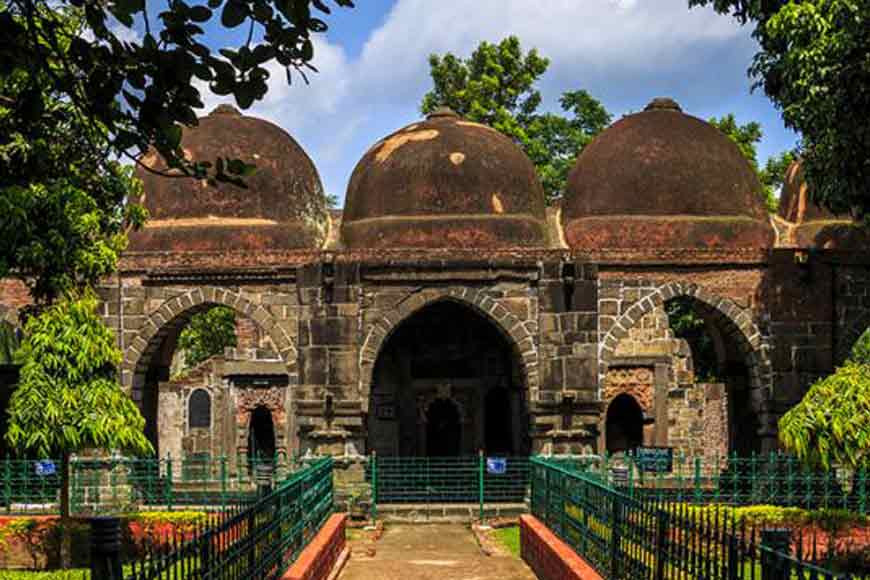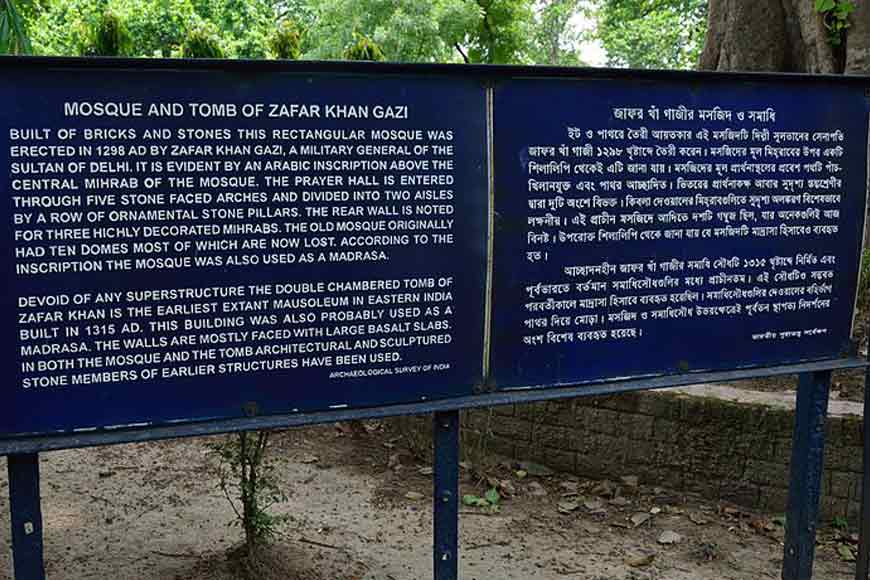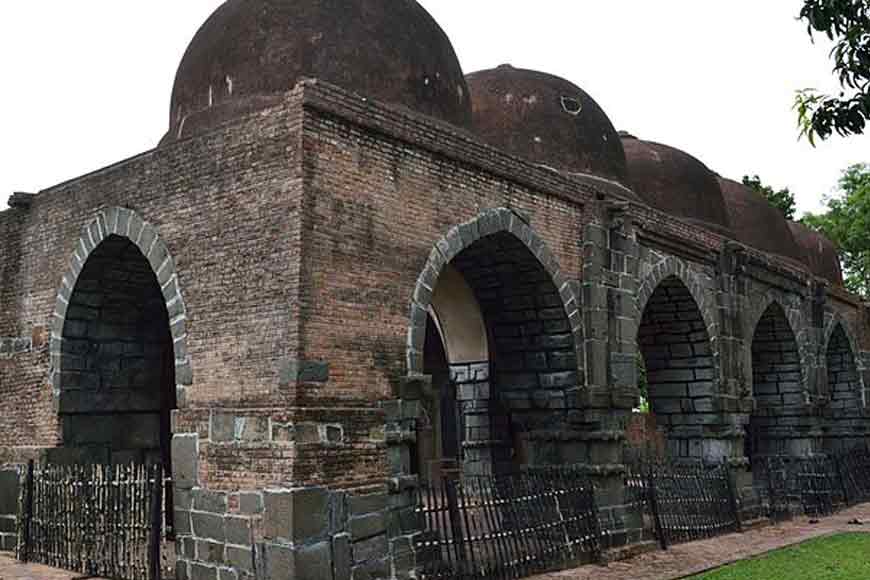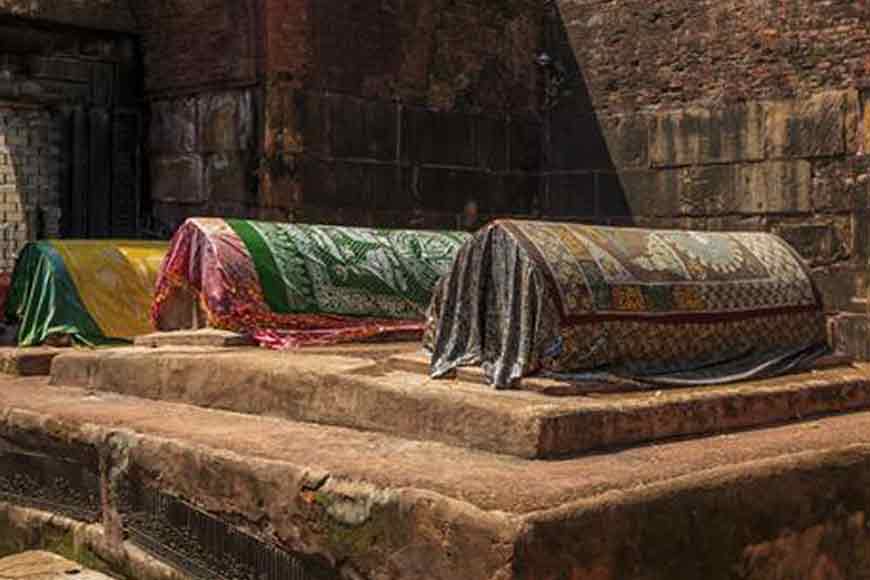The Turk ruler of Bengal who learnt Sanskrit and worshipped Ganga

Bengal is all about harmony and secularism. This part of the country has always upheld the notions of equality and communal harmony. If we sift through the pages of history, we come across innumerable instances where locals have accepted and reconciled their differences to live next to each other and lead their lives peacefully. Do you know the person who commissioned construction of the first mosque in Bengal? He was a devotee of Goddess Ganga and worshipped her fervently. Yes, Bengal is a blazing testimony to this apparent socio-cultural dichotomy.
It all dates back to late 13th century. Zafar Khan Ghazi was an Army General under Sultan Feroze Shah of Delhi. He spearheaded the Turkish conquest of Bengal and invaded Hooghly and defeated the local Hindu ruler and established Turkish rule in Bengal. He is believed to be the harbinger of early Islam in Bengal and a founder of one of the first Sufi lineages in the region. Zafar Khan was fascinated by the natural beauty of Tribeni, the confluence of rivers Bhagirathi, Yamuna and Saraswati and decided to set his capital at the port town at Adi Saptagram. He was an enigmatic figure who was not only idealized as a Muslim warrior and martyr, but local people regarded him as a champion of the poor, a composer of odes to the river Ganga in Sanskrit, and a historical bridge between Muslims and Hindus.

However, Zafar Khan Ghazi’s reign was short-lived as he embroiled in a battle with a local ruler named Bhudev for the second time and was killed. In 1298, a mosque was constructed at Triveni that is considered to be among the earliest surviving Muslim monuments in Bengal. According to an inscription, the mosque is dated 698 AH (1298 AD). It is a brick-and-stone style introduced by the Muslims in Bengal in place of the traditional Hindu style of laying rectangular cut stones one upon another without mortar. The stones used in the mosque were originally materials from temples, as evidenced by figures of Hindu deities carved on some pieces. The original structure has suffered reconstruction many times, but the mosque exists to this day and is a major Hindu pilgrimage spot on the River Ganga.

In 1315, only yards away to the east of the mosque, beyond an open courtyard, a Dargah was constructed. It has two chambers and the roof has long collapsed. The western chamber contains the grave of Zafar Khan and his wife. The eastern flank has four graves on masonry platform. The walls are built of old temple materials - rectangular stone pieces with the graves of his two sons, Ain Khan Ghazi and Ghain Khan Ghazi. The fourth grave in the complex houses the graves of Zafar Khan’s third son, Barkhan Ghazi. He is buried along with his wife and two sons, Rahim Khan Ghazi and Karim Khan Ghazi. Incidentally, it is believed that this daughter-in-law of Zafar Khan Ghazi was the princess of Hooghly. The Turkish General not only settled in Bengal but also blended with the local populace.
The Dasavatar carvings on the North wall of the mosque prove it to be originally a Vishnu Temple. Inside the Dargah, in the holy mausoleum, there are inscriptions engraved in Sanskrit and elaborate work adorn the walls of both the mosque and the tomb, depicting scenes from the Ramayana and Mahabharata. The mosque’s east door clearly resembles a temple entrance architecture, while the ‘Mangal Ghat’ is full of designs on temple walls. The door frame towards the north also shows temple architecture and designs. Temple doors are visible on all four sides of this mosque. This mosque has a wall with the Vedic Anahata Chakra. It is, however, surprising that the structure neither conforms to a Hindu temple nor to a Muslim tomb.

Legend has it that Zafar Khan Ghazi learnt Sanskrit once he settled at Triveni. Like devout Hindus, he would offer prayers to Ganga Devi (the river) daily and recite the ‘Gangashtak Stotra’, which many believed to be his composition, but it was penned by Sage Vedvyasa. The inscription on Zafar Khan Ghazi’s tomb was later translated by H.Balochman, which read as ‘Khan the lion of lions has appeared by conquering the towns of India in every expedition and by restoring the decayed religious institutions. And he has destroyed the obdurate among the infidels with his sword and spear and lavished the treasures of his wealth in helping miserable.’
The days of glory are long gone but a brave Turkish warrior who came with the mission to vanquish Bengal, fell in love with the land and its people and chose the place for his last resting place. The unique architecture of the mosque commissioned is a reminder of communal harmony and peaceful co-existence, which is the very essence of Bengal.










